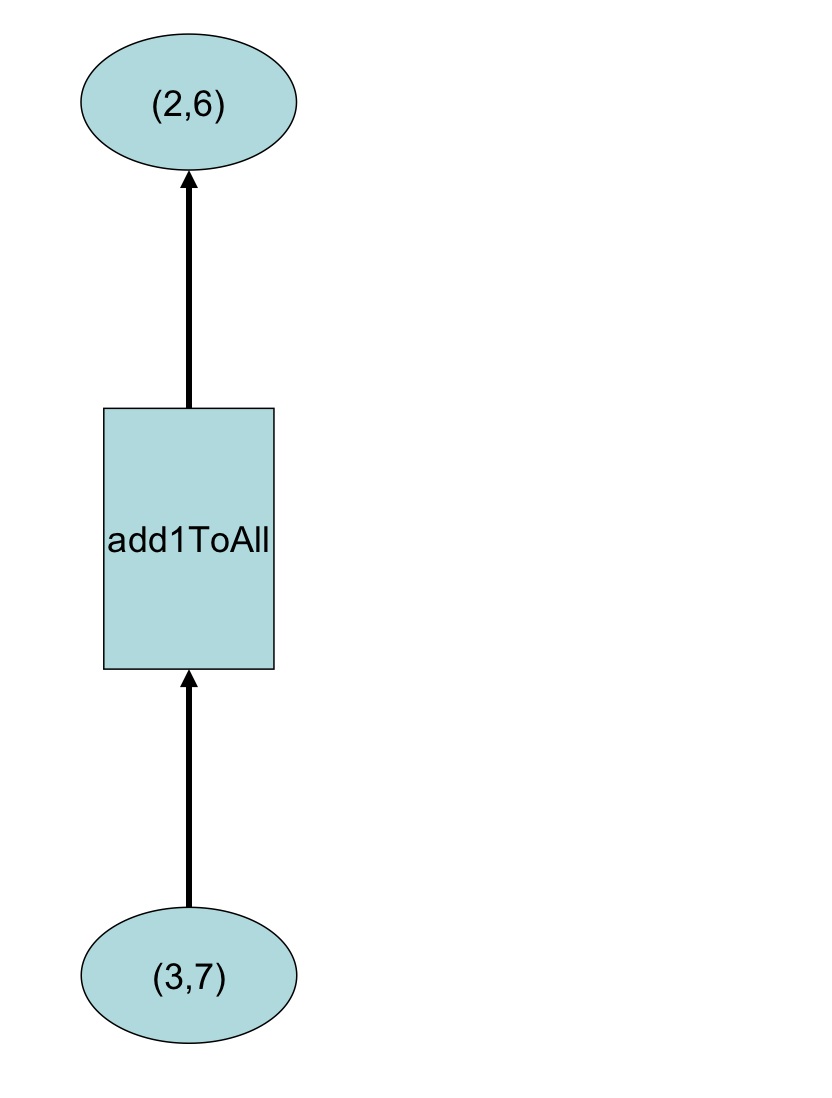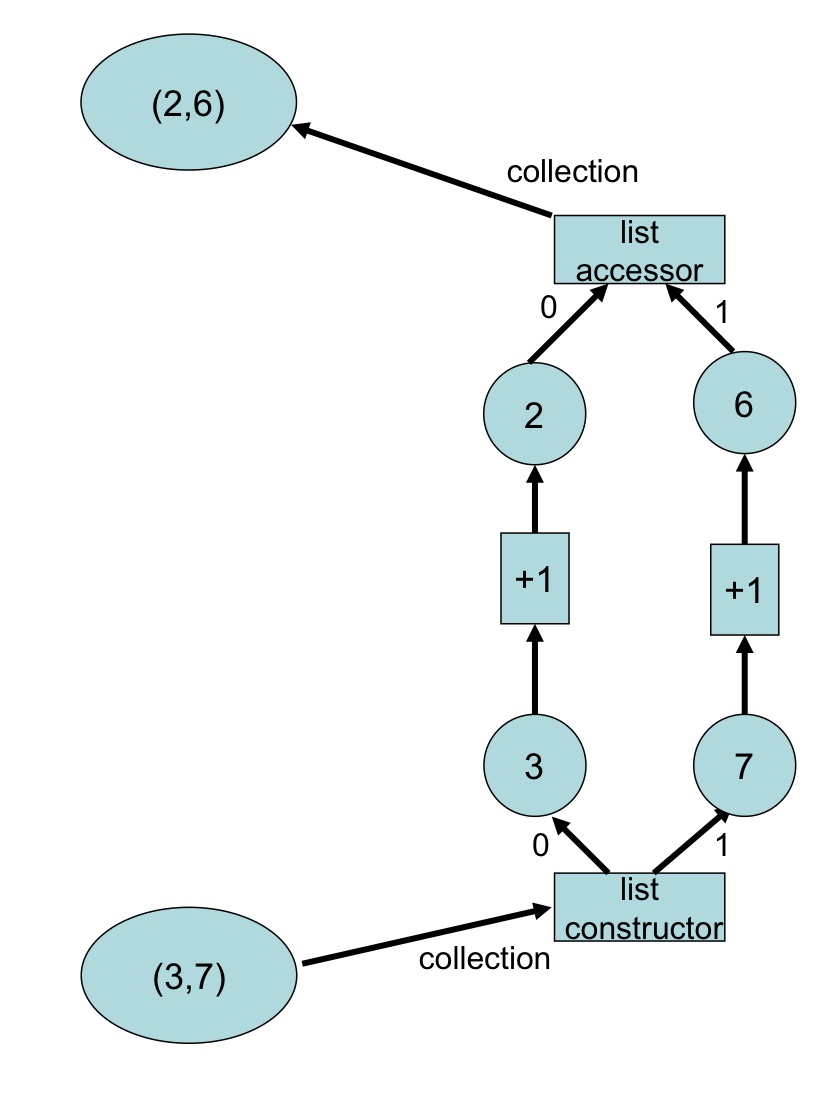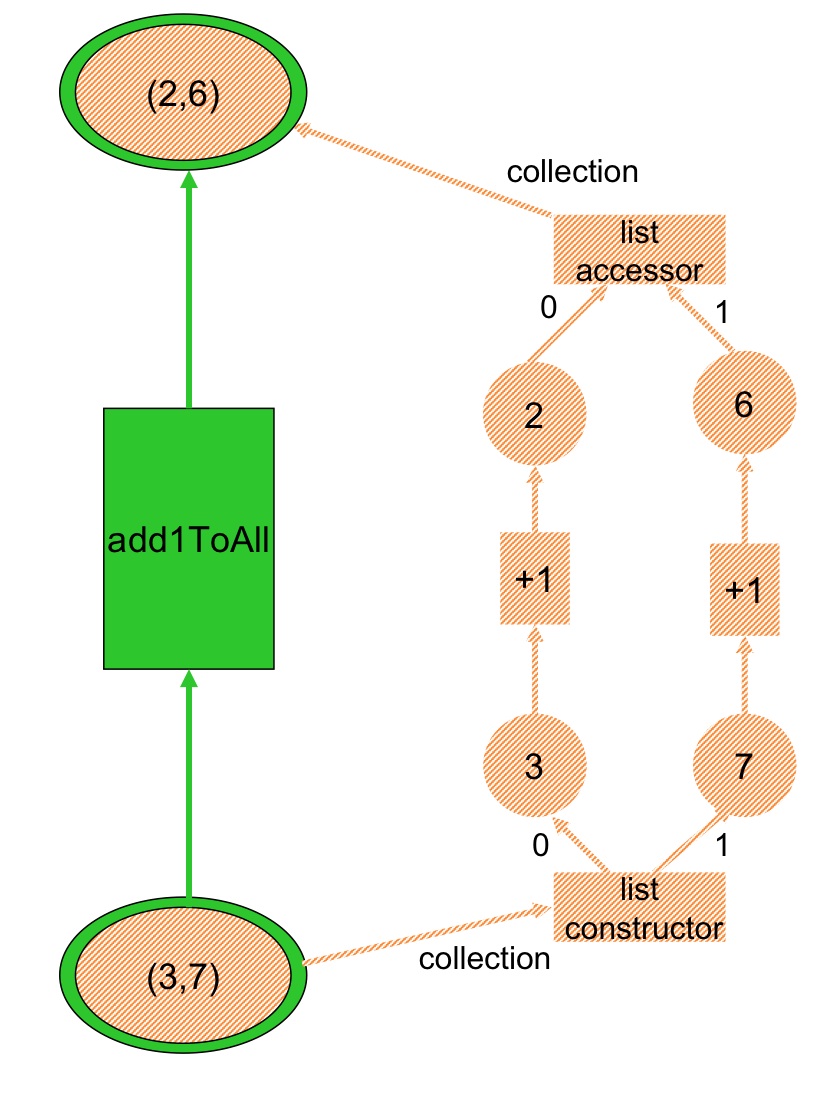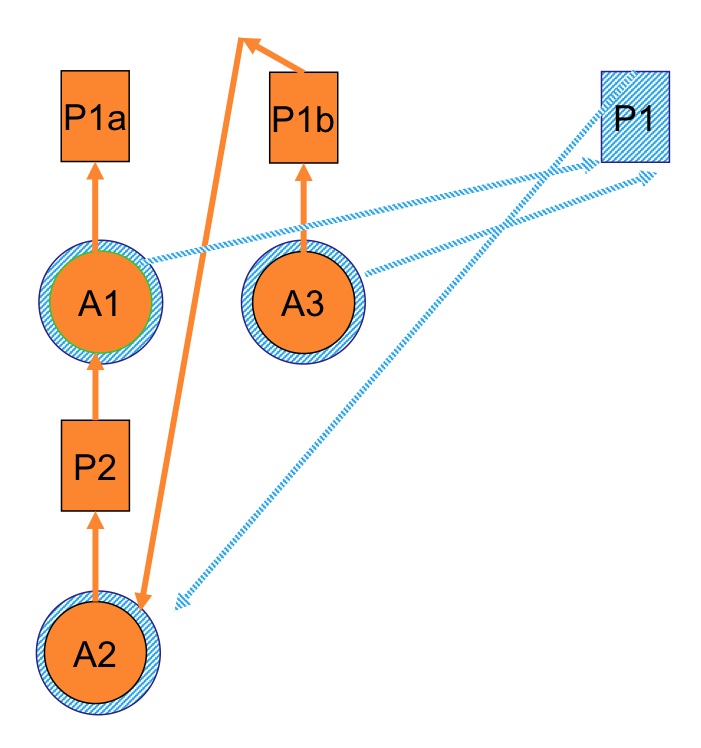Start of topic | Skip to actions
Open Provenance Model Contents
to top
- Introduction
- Basics
- Overlapping and Hierarchichal Descriptions
- Provenance Graph Definition
- Timeless Formal Model
- Inferences
- Formal Model and Time Annotations
- Time Constraints and Inferences
- Support for Collections
- Example of Representation
- Conclusion
- Best Practice on the Use of Agensts
- References
3 Overlapping and Hierarchichal
Figure 4 shows two examples of provenance graphs describing what led the list (3,7) to being as it is. According to the left-hand graph, the list was generated by a process that added one to all constituents of the list (2,6). According to the right-hand graph, the derivation process of (3,7) required the list to be created from values 3 and 7, respectively obtained by adding one to 2 and 6, themselves being the data products obtained by accessing the contents of the original list (2,6).


Figure 4: Examples Provenance Graph

Figure 5: Example of Overlapping and Hierarchical Accounts in a Provenance Graph

Figure 6: Hierarchy of Accounts in a Provenance Graph

Figure 7: Multiple Accounts Creating Cycle
Comments
to top
| I | Attachment  | Action | Size | Date | Who | Comment |
|---|---|---|---|---|---|---|
| | bw-example-1.jpg | manage | 36.8 K | 30 Jul 2008 - 18:45 | PaulGroth | |
| | bw-example-2.jpg | manage | 75.7 K | 31 Jul 2008 - 20:12 | PaulGroth | |
| | bw-example-4.jpg | manage | 172.0 K | 30 Jul 2008 - 18:45 | PaulGroth | |
| | hierarchy.jpg | manage | 198.4 K | 30 Jul 2008 - 18:47 | PaulGroth | |
| | cycle-views.jpg | manage | 79.7 K | 30 Jul 2008 - 18:46 | PaulGroth |